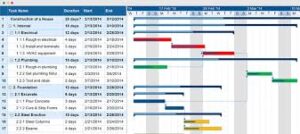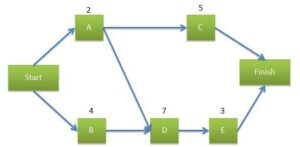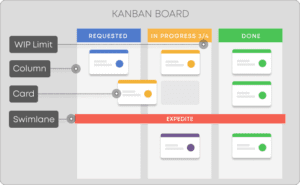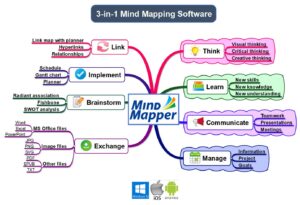
Mastering the Art of Crafting an Exceptional Project Plan
Mastering the Art of Crafting an Exceptional Project Plan
In the realm of project management, the cornerstone of success lies in the meticulous crafting of a well-defined project plan. A project plan serves as the roadmap that guides the entire project from inception to completion, ensuring clarity, alignment, and effective execution of tasks. However, creating a great project plan requires careful consideration of various factors and elements. In this comprehensive guide, we will delve into the essential steps and best practices for writing a project plan that sets the stage for success.
Understanding the Purpose of a Project Plan
Before diving into the intricacies of crafting a project plan, it’s crucial to understand its purpose. A project plan serves as a comprehensive document that outlines the project’s objectives, scope, deliverables, timelines, resources, and risks. It provides a clear roadmap for all stakeholders involved, ensuring everyone is aligned on the project’s goals and expectations. Additionally, a well-developed project plan serves as a communication tool, enabling effective collaboration and coordination among team members and stakeholders.
So what makes a great project plan? Let us explore some of the key components
Key Components of a Project Plan
Define a project scope
The first step in crafting a project plan is to define the project scope. Clearly outline the objectives, deliverables, and boundaries of the project to ensure everyone understands what is included (and what is not). Be specific and avoid ambiguity to prevent scope creep and ensure project focus. A project charter is also a good place to define the project and helpful in creating the scope in detail.
Establish Clear Objectives and Milestones
Set SMART (Specific, Measurable, Achievable, Relevant, Time-bound) objectives and milestones to provide clear targets for the project team. Break down the project into manageable tasks and define milestones to track progress and celebrate achievements along the way.
Develop a Work Breakdown Structure (WBS)
Create a hierarchical breakdown of the project tasks and activities using a Work Breakdown Structure (WBS). Organize tasks into logical groupings and subtasks to facilitate planning, scheduling, and resource allocation.
Identify and Allocate Resources
Determine the resources required to execute the project successfully, including human resources, materials, equipment, and budget. Allocate resources based on task requirements, availability, and dependencies to ensure optimal utilization and efficiency. Look at my previous post on process to understand where all these fit in.
Create a Realistic Timeline
Develop a project schedule that outlines the sequence of tasks, dependencies, and deadlines. Use tools such as Gantt charts or project management software to visualize the timeline and identify critical path activities. Ensure the timeline is realistic and accounts for potential delays or contingencies.
Define Roles and Responsibilities
Clarify the roles and responsibilities of each team member and stakeholder involved in the project. Assign tasks and ownership to individuals based on their skills, expertise, and availability. Establish clear communication channels and escalation paths to facilitate collaboration and decision-making.
Risk Management and Contingency Planning
Identify potential risks and uncertainties that may impact the project’s success and develop mitigation strategies and contingency plans to address them. Regularly assess and monitor risks throughout the project lifecycle and adjust plans as needed to minimize impact.
Communication and Stakeholder Engagement
Establish a communication plan that outlines how project information will be disseminated, who will be responsible for communication, and the frequency of updates. Engage stakeholders proactively and solicit feedback to ensure alignment and manage expectations effectively.
Monitor and Track Progress
Implement mechanisms for monitoring and tracking project progress, such as regular status meetings, progress reports, and key performance indicators (KPIs). Use project management tools and software to capture data, analyze trends, and identify areas for improvement.
Evaluate and Adapt
Conduct regular reviews and evaluations of the project plan to assess performance against objectives, identify lessons learned, and make necessary adjustments. Continuously iterate and adapt the project plan based on feedback, changing requirements, and evolving circumstances.
Type of Project Plans
Let us look at some of the ways Project Plans are captured along with some of the popular tools that allow you to create them.
Gantt Charts

Microsoft Project: A comprehensive project management software that allows users to create detailed Gantt charts, track tasks, manage resources, and generate reports.
Smartsheet: An online collaboration and project management tool that offers Gantt chart functionality along with customizable templates, collaboration features, and automation capabilities.
Trello: While primarily a Kanban board tool, Trello also offers a Gantt chart Power-Up that allows users to visualize tasks on a timeline.
Network Diagrams

Microsoft Visio: A versatile diagramming tool that enables users to create network diagrams, flowcharts, and other visualizations with ease. It offers a wide range of shapes and templates for creating detailed network diagrams.
Lucid chart: An online diagramming tool that provides a user-friendly interface for creating network diagrams, flowcharts, and other visualizations collaboratively. It offers real-time collaboration features and integrations with popular project management platforms.
Kanban Boards

Trello: One of the most popular Kanban board tools that allows users to create boards, lists, and cards to organize tasks and track progress visually. It offers customizable workflows, automation features, and integrations with other productivity tools.
Asana: A versatile project management tool that offers Kanban board functionality along with task lists, calendars, and timelines. It provides features for task management, collaboration, and project tracking in one platform.
Mind Maps

MindMeister: An online mind mapping tool that enables users to create, share, and collaborate on mind maps in real-time. It offers a user-friendly interface, customizable templates, and integration with popular productivity tools.
XMind: A desktop-based mind mapping software that provides a wide range of features for creating and organizing mind maps, including various layout options, styling tools, and export options.
Authored by Vijay Chander – 2024 All rights reserved

